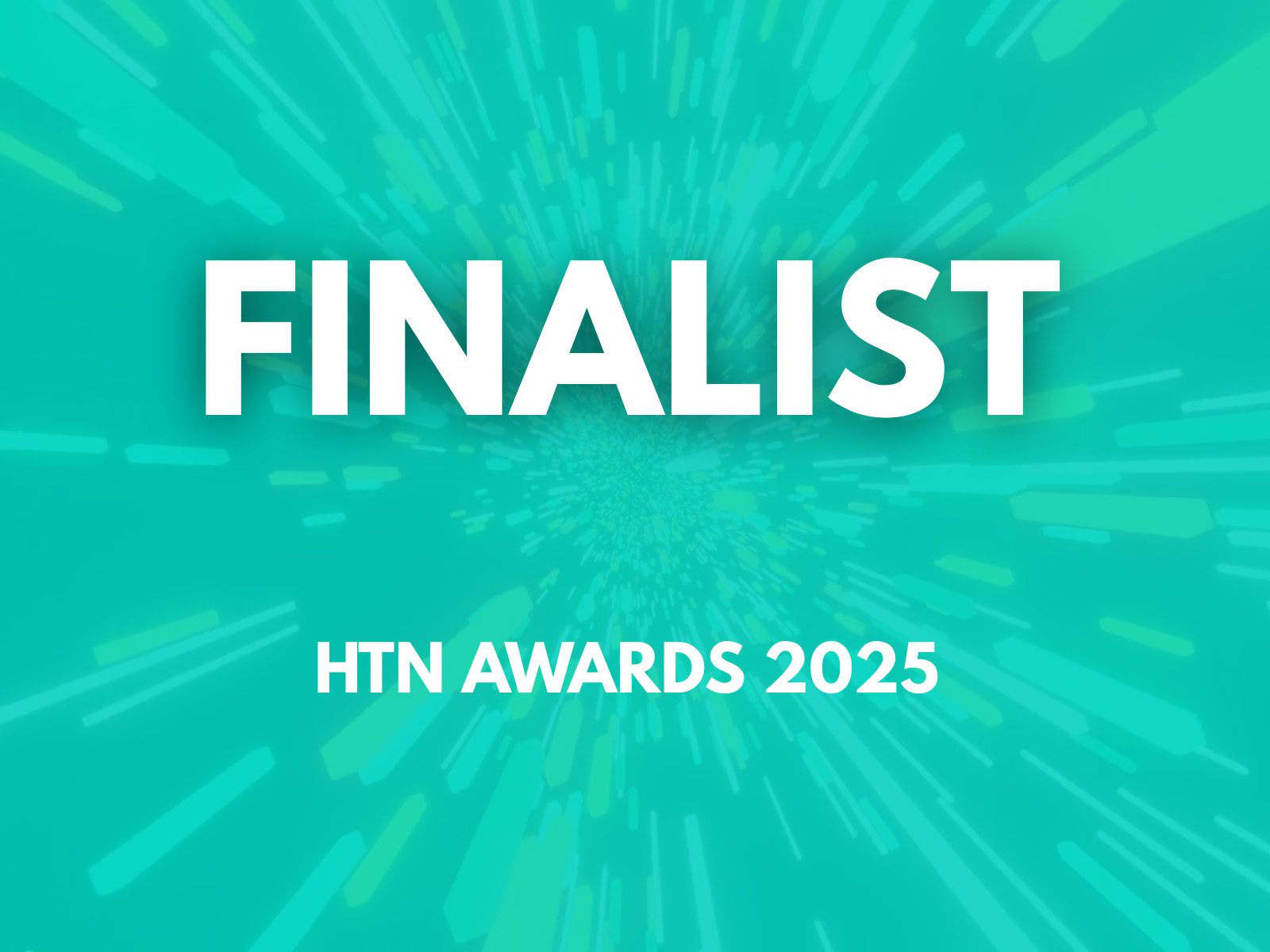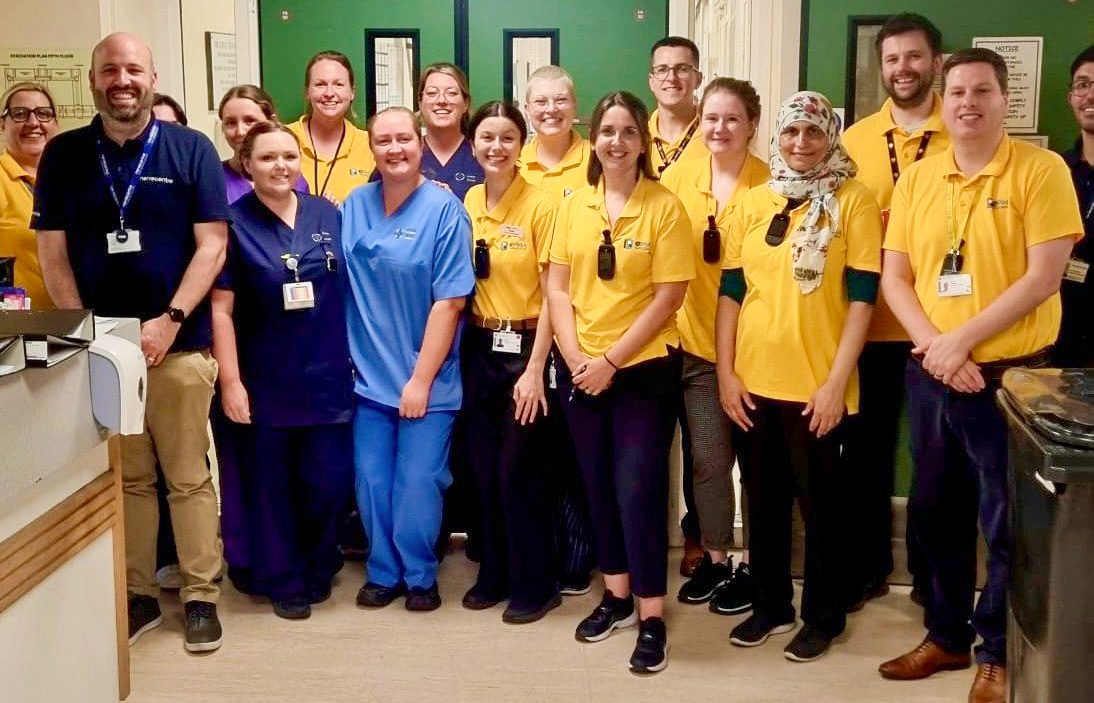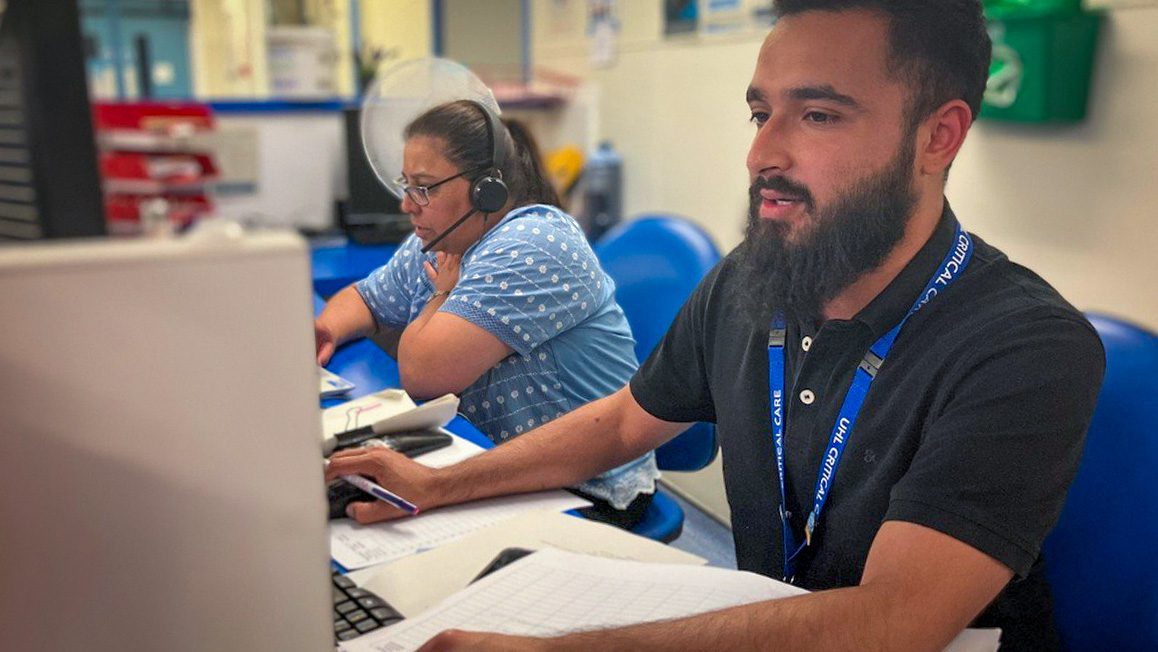The story
Calderdale and Huddersfield NHS Foundation Trust (CHFT) is at the vanguard of technology-advanced trusts in England. In 2016, its five-year strategic plan included an objective to optimise information technology as part of a long-term modernisation programme to deliver clinical and operational sustainability. It is already part way through that journey. A key component of its digital strategy is the 2017 introduction of an electronic patient record (EPR) system that sits at the core of its systems and allows vital patient information to be shared with clinicians and providers across the care continuum. The Trust describes it as the single biggest transformation it has ever undertaken.
However, despite recognising the benefits of a full-scale EPR, CHFT knew that for its modernisation programme to work, it needed to ensure its EPR maximised existing digital innovation that was already helping it improve its patient outcomes. In particular, clinicians were keen to maintain their use of Nervecentre – a mobile clinical workflow platform that allows them to collect, share and access patient information in real time, and escalate timely and appropriate care. Strongly embraced by the Trust’s clinical teams, the solution has proved invaluable in monitoring patients’ vital signs, accelerating care and managing clinical workflow. Moreover, it has played an important role in helping CHFT identify deteriorating patients and improve its performance against mortality indicators. The Trust was therefore determined that any future EPR should work with, rather than replace, Nervecentre.
The new EPR, from Cerner, went live in May 2017. Its introduction was the culmination of positive collaboration between CHFT, Cerner and Nervecentre to configure a solution that met the Trust’s clinical and operational needs. The deployment debunks a common misconception that the implementation of EPR means organisations must rip out their existing technologies and replace them with a single solution. Its early success underlines the critical importance of interoperability between IT systems. Moreover, it shows why Calderdale and Huddersfield NHS Foundation Trust remains at the forefront of the digital revolution reshaping NHS services in England.
This is their story.
The national challenge
The digitisation of healthcare services is both a challenge and an opportunity for NHS organisations in England. Recommendations set out in the next steps of the Five Year Forward View, the Wachter Review and the National Information Board’s 2014 Framework for Personalised Health and Care consistently highlight the potential for data and technology to transform care. In 2016, the latter was adopted to become national policy. Collectively, these recommendations build on proposals outlined in the original Five Year Forward View and align with an ambitious NHS England target for a paperless NHS by 2020.
The adoption of EPR systems is widely regarded as an essential step on the journey towards a more effective and efficient NHS. The rationale is strong. By ensuring that patients’ medical records are securely available to the right clinicians at the right time, wherever they are, NHS organisations are better placed to achieve the Triple Aim of better health, better healthcare and lower cost. The smart application of digital technology can have a powerful impact on clinical workflows, patient experience and, ultimately, health outcomes. The key to success, however, is ensuring that information is both accessible and integrated – exploiting the global trend towards mobile technology and connecting stakeholders in care settings right across the pathway. The 2016 Wachter Review concluded that interoperability is a core characteristic of the NHS digital ecosystem.
At the macro level, the potential of digital healthcare is universally acknowledged. However, progress on the ground is variable, with local organisations each at different stages of digital maturity. The most progressive are those that are exploring mobility and interoperability, and leveraging innovation that fuels better connected care. Like Calderdale and Huddersfield NHS Foundation Trust.
The local challenge
Calderdale and Huddersfield NHS Foundation Trust provides healthcare services to a population of almost half a million people in West Yorkshire. The Trust employs over 6000 staff across two hospitals – Calderdale Royal Hospital and Huddersfield Royal Infirmary – as well as various community sites and health centres.
In 2013/14, CHFT kick-started a Strategic Review to redesign healthcare for its communities by putting the patient at the heart of its services. The Review, which followed a 2-year programme of investment in modernising the Trust’s infrastructure, outlined a long-term objective to optimise information technology to connect patients and clinicians across primary, secondary and community settings. Its wider vision to provide compassionate care included an action plan called “Courage to put the Patient First”, which sought to minimise wasted time for patients and use real-time data to drive decisions. The 2013/14 Review, which would ultimately culminate in a Strategic Plan that was approved in 2016, heralded the start of a procurement exercise to deploy a centralised EPR that would enable the Trust to share patient information with all providers involved in a patient’s care.
In 2014/15, CHFT established a digital roadmap to facilitate its long-term strategic goals. The first phase was designed to build the Trust’s digital capabilities and increase the technological utility of its workforce in preparation for the second phase – the implementation of EPR. Owen Williams, CEO, CHFT, says: “We wanted to take a step journey towards EPR. The first stage had two principal aims; to identify tools that could strengthen our focus on patients, and to make it easier for our staff to interact with technology that could support them in the delivery of better care. The first phase would pave the way for our EPR deployment.”
Improving patient care was a key strategic driver for CHFT, with a major priority being its management of deteriorating patients. The Trust, which suffered from a larger than average Hospital Standardised Mortality Ratio (HSMR), wanted to raise standards of care for acutely ill and frail/elderly patients. Its Summary Hospital Mortality Index (SHMI) placed CHFT in the ‘higher than expected’ category. The Trust was therefore keen to explore technologies that could help it improve performance against these important indicators.
In 2015, CHFT deployed Nervecentre technology to enable electronic observations and support the effective management of handover, clinical assessments and its Hospital Out of Hours Programme (HOOP). The system was successfully piloted on two wards and fully implemented across both hospitals later in the year. Nervecentre enables clinical staff to record observations on mobile devices at the patient’s bedside. This information can then be shared and accessed by other healthcare professionals via a central system. Crucially, the solution automates reminders when observations are due and alerts clinicians when a patient’s condition starts to deteriorate – triggering early intervention and the appropriate escalation of care.
The introduction of Nervecentre is one of a range of measures that has helped CHFT improve its response to deteriorating patients. Its adoption, as part of the Trust’s Care of the Acutely Ill Patient (CAIP) programme, has played a key role in reducing patient mortality and led to significant improvement against HSMR and SHMI indicators.
The strategic deployment of Nervecentre provided a catalyst for the increased utility of technology within the Trust – sparking a ripple effect of adoption across HCAs, nurses, junior doctors and senior consultants. “Nervecentre helped us get a broad coalition of clinical colleagues to use technology to improve patient care,” says Owen Williams. “Its impact on our ability to provide high quality care in a timely fashion created such positive efficacy that, as the go-live for our EPR drew closer, an inevitable question arose: should we look to utilise the early warning equivalent within the Cerner system or maintain our use of Nervecentre? The choice became quite straightforward. CHFT prides itself on being clinically-led and listening to the views of our doctors, nurses and therapists. That strong clinical voice told us that our teams understood and valued the benefits of Nervecentre and didn’t want to lose them. At that point, our challenge was simply to find an interoperable solution.”
Mandy Griffin, Associate Director of ICT, CHFT, cites mobility and utility as two of the major factors driving clinical advocacy for Nervecentre. “Interoperability with our EPR was critical because our staff were wedded to Nervecentre. The impact it was having across the hospital was incredible. A key reason for us wanting to keep it – in addition to that escalation point, which goes directly to the clinician – was that it provides mobility. This means we can take care right to the patient’s bedside. But it also means that our staff are using technology that they’re already familiar with at home. Nervecentre has been instrumental in helping us identify deteriorating patients and get care to them quickly and effectively. Integrating that with our EPR solution was therefore incredibly important.”
The interoperable solution
The implementation of EPR is the biggest transformation CHFT has ever undertaken. Achieving interoperability with Nervcentre brought additional complexity, but proactive collaboration between the two technology providers and the Trust ensured that the deployment was ultimately a straightforward process. “The integration was a challenge because it had never been attempted before,” says Mandy Griffin. “However, it quickly became clear that Cerner and Nervecentre were prepared work together and there was a collective determination to make it happen. And it did. We now have a solution that’s the best of both worlds – we’ve got the mobility and escalation of Nervcentre, and the Cerner EPR to compliment it.”
Collaboration across all parties underpinned the successful deployment. “We worked with both suppliers to build an interface between the two systems that was clinically useful,” says Dr Alistair Morris, CCIO at CHFT. “We achieved this prior to go-live. It’s enabled us to give our staff the continuity of Nervecentre, which was embedded in the Trust, but also made sure that the EPR contains the whole information around the patient. We’ve retained that mobile functionality and developed a link between Nervecentre and the EPR that allows us to share information across both systems. This means we can keep the patient safe and our clinical teams informed.”
The clinical and operational benefits of interoperability are very quickly being realised and will only increase as the new approach embeds into CHFT’s culture. The early indications are hugely positive – not only in how the interoperable systems are helping the Trust leverage the power of information to improve care, but also in how smoothly the implementation process ran. “The Cerner and Nervecentre solutions are working together incredibly well – better than we could ever have hoped,” says Jackie Murphy, Director of Nursing, CHFT, with a portfolio for modernisation. “Nervecentre had become a key part of the transformation work we’ve been doing – and, in terms of its integration with Cerner, it’s worked very easily.”
The conclusion
If the NHS is to maximise the potential of digital technologies to transform care, interoperability is likely to become increasingly important. “There is no such thing as a one-system solution,” says Owen Williams. “As the complexity of patients increases over time, our ability to use technology in a way that supports that complexity is vital. Interoperability helps do that. It facilitates the bridging together of different systems to improve patient satisfaction and patient care.”
So what next? As NHS trusts look to employ EPR systems, they’ll invariably face the dilemma of choosing a single solution or connecting systems to maintain the benefits of existing digital tools. “In our experience, that choice should be clinically-driven,” says Owen Williams. “Our clinical colleagues are closest to the patient. If we’re to stay truly patient-centred, we must listen to them and ensure that digital decisions are based on what we hear. The outcomes of those initiatives should be evaluated in a similar manner.
“The NHS is full of examples where digital technology has enabled better patient care. Certainly we feel that our work with Cerner and Nervecentre has been an extremely positive, valuable and productive experience. But that shouldn’t be validated by the words of a Chief Executive. Just walk onto our wards and listen to what our clinical colleagues have to say. That’s far more powerful. And it’s the essence of a clinically-led, patient-centred service that strives to provide compassionate care.”





